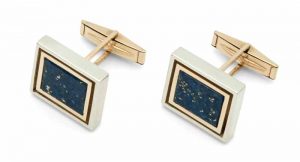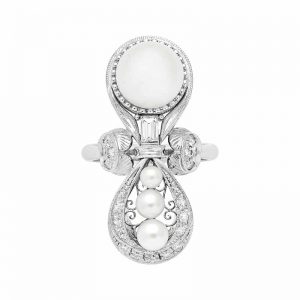Spin the globe

There are varying standards for precious metal purity in countries and communities worldwide. There have also been concerted efforts to produce standards that can be used and recognized internationally. However, the world is made up of independent countries, so the guidelines we have arrived at are national in nature.
The United States and Canada, for example, are close neighbours, but follow different rules. In Canada, we tend to use just the letter K as an abbreviation for ‘karat,’ while the United States typically uses ‘Kt.’ Canadians also commonly use 10-, 14-, and 18-karat gold, and while we don’t use it in jewellery, we allow a purity as low as nine-karat gold. The United States allowed alloys with no lower than 10-karat purity to be considered gold until it recently removed the threshold. This difference was due to Canada’s historical connection to Great Britain, where nine-karat gold is standard.
In both Canada and the United States, the proportional purity of gold is spelled ‘karat,’ with the letter K. In Great Britain and some other Commonwealth countries (Australia, for example), we see the word spelled with the letter C—the same as a carat of gemstones. This is abbreviated as ‘C’ or ‘Ct.’ The spelling used here and in the United States is employed to help minimize confusion.
In Europe and much of the rest of the world, metal purity is stated as a number in parts per thousand. The proportion can be worked out by dividing the alloy’s karatage by 24 (pure gold). In other words, 18-karat gold in Canada could be translated to a European standard by dividing 18 by 24, which equals 0.750. So, in Europe, 18-karat gold is usually described as ‘750’ or ‘0.750’ (750/1000). In other countries, one might see other representations of purity. For example, in Vietnam, 18-karat gold is represented as 75 per cent (the percentage of pure gold in the item).

Traditionally, France and Italy have had a minimum standard of 18-karat gold (stated as ‘750’), but with the uniform standards of the European Union (EU), they have both had to allow lower standards such as 14-karat. However, most people in those countries still don’t think alloys of less than 18-karat purity are really gold. Germany has traditionally allowed eight-karat gold, generally represented in its digital form as ‘333,’ meaning 8/24 of the item (or one-third) is gold.
At the other extreme, traditional Chinese gold jewellery is made in pure 24-karat gold, and in India, jewellery has traditionally been made with 22-karat gold. Such high-karat jewellery is really a wearable form of gold bullion, and is bought and sold with little variation between the retail and resale prices. Those markets are seeing globalization with more Western 14- and 18-karat gold being used in jewels made in these countries.





